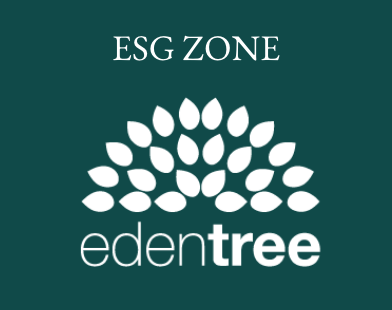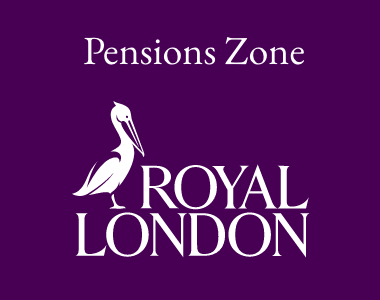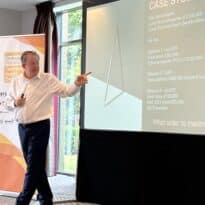Catriona Standingford, MD of Brand Financial Training, takes a look at taxation of Bare Trusts, Interest in Possession (IIP) Trusts and Discretionary Trusts.
First published in the July/August 2019 issue of professional Paraplanner.
Paraplanners studying for a taxation or trusts exam, will need to know about the main trusts used in financial planning and the different taxation rules that apply to each.
Bare Trusts
For tax purposes, bare trusts are more or less treated as if the trust did not exist, with the beneficiary being liable for any tax due. Any income received is taxed as the beneficiary’s income and charged at their rate; if they have any unused personal allowance, personal savings allowance or dividend allowance, these can be used. Whatever their tax status, the beneficiary must declare the trust income on their self- assessment form.
If the settlor of the trust is the parent of a minor beneficiary then the parental settlement rules apply – if gross income received by the trust exceeds £100 it will be taxed as if it belongs to the parent at their rates.
When assets are disposed of, or are transferred out of a bare trust, the beneficiary will be liable for any CGT due. If they have not used their annual exempt amount, they can use it to offset the gain with any remainder normally being subject to CGT at 10% or 20% (18% and 28% apply to gains on residential property that are not exempt under principal private residence relief (PPRR)).
The creation of any type of trust is a disposal for CGT purposes. The transfer of assets into a trust can benefit from holdover relief. With a bare trust the settlor can only claim holdover relief if the gift into the trust is a business asset.
For inheritance tax (IHT), a gift into a bare trust is a potentially exempt transfer (PET), therefore, no IHT is due at the time of the gift but, if the settlor dies within 7 years of making it and the value of the gift exceeds their available nil rate band, the beneficiary will be liable to IHT at 40% on the excess. Taper relief will reduce the IHT charge if the gift was made over 3 years before death occurred.
Where the beneficiary of a bare trust dies, the value of the trust is included in their estate for IHT purposes.
Interest in possession trusts (IIP)
These are where at least one beneficiary has an immediate and automatic right to trust income. Any capital from the trust is usually passed on to a different beneficiary or group of beneficiaries at a point in the future. For income tax purposes, the trustees of an IIP trust are treated as if they are basic rate tax payers, but without the benefit of any of the allowances. Depending on their own tax position the beneficiaries may be able to reclaim tax or be liable for more.
As with bare trusts, the settlor will be liable for any income tax liability where the beneficiary is their minor child and the income exceeds £100. The same is also true where the trust is a settlor interested trust i.e. where either the settlor or their spouse or civil partner is a beneficiary.
IIP trusts pay CGT at a rate of 20% for most disposals made within the fund or when a transfer of property is made to a beneficiary (28% for residential property gains that are not exempt under PPRR). However, the trust can claim an exemption of up to half the standard annual exempt amount (although this can be subdivided further where the settlor has created more than one IIP or discretionary trust).
The transfer into an IIP trust is a disposal for CGT purposes, and, because IIP trusts are subject to the chargeable lifetime transfer rules any gain arising, providing the trust is neither a parental settlement nor a settlor-interested trust, can be held-over. If holdover relief is not claimed, any IHT charged on the gift when it is placed into the trust can be deducted from its disposal value providing the settlor pays the IHT due.
The IHT treatment of an IIP trust is dependent upon when the trust was created; those created prior to 22nd March 2006 are treated in the same way as bare trusts. If the gift into trust was a PET, the trust forms part of the beneficiary’s estate and the trustees pay any IHT bill due as a result. These rules only still apply where no change in beneficiary has occurred since October 2008, unless a change has happened because the beneficiary died and the new beneficiary is their surviving spouse.
IIP trusts that have been otherwise varied and those created on or after 22nd March 2006 are potentially subject to tax on creation, every ten years and when capital is paid out of the trust.
An immediate tax charge of 20% is due on lifetime transfers into IIP trusts if, after exemptions, their value exceeds the available nil rate band. If the settlor pays the tax this becomes an effective rate of 25%. There is also a 10-yearly tax charge of up to 30% of the lifetime rate of 20% on the value of the trust in excess of the available nil rate band on each 10-year anniversary (maximum charge of 6%). There is also an exit charge where capital is paid from the trust between anniversaries which is payable if there was either an immediate tax charge at outset or a 10-yearly anniversary charge prior to the withdrawal.
Discretionary trusts
Trustees of discretionary trusts have discretion over how trust assets are distributed and who to, from the list of discretionary beneficiaries. For income tax purposes, discretionary trusts benefit from a £1,000 standard rate tax band; income received in this band is taxed at the basic rate. Trustees do not benefit from the personal savings allowance or the dividend allowance. The £1,000 is reduced proportionately where more than one discretionary trust has been set up by the same settlor down to a minimum of £200. After the standard rate band has been used, trustees are charged to tax at the additional rates.
The beneficiary of a discretionary trust does not pay tax unless they receive a trust distribution. Regardless of its original source, this is paid out as ‘trust income’ and is deemed to be received net of 40%. If the beneficiary is not an additional rate tax payer they can reclaim any tax paid in excess of their liability. Because the distribution is classed as trust income, the beneficiary cannot use the personal savings allowance or the dividend allowance.
As with IIP trusts, the settlor will be liable for any income tax liability where the beneficiary is their minor child and the income to the trust exceeds £100 or where the trust is a settlor interested trust.
Where the trustees make a disposal within a discretionary trust or make a transfer out of the trust to a beneficiary, CGT is payable on gains at the higher rate of 20%, with the rate rising to 28% for gains from the disposal of residential property that are not exempt under PPRR. Discretionary trusts also benefit from an annual exempt amount in the same way as IIP trusts.
There is no further CGT liability for a beneficiary who receives a transfer from a discretionary trust. However, they can jointly elect to claim holdover relief with the trustee where there is a gain on the asset transferred.
Discretionary trusts are treated for IHT purposes in the same way as IIP trusts created on or after the 22nd March 2006 so they are potentially subject to an immediate, a ten yearly and an exit charge where the value of the trust exceeds the available nil rate band.
Other rules apply to trusts such as those with a vulnerable beneficiary and pre-2006 accumulation and maintenance trusts.





























